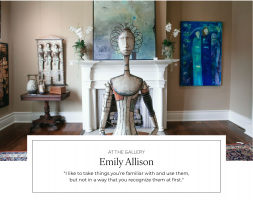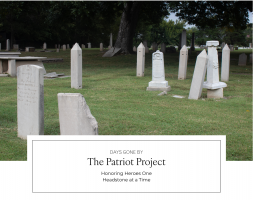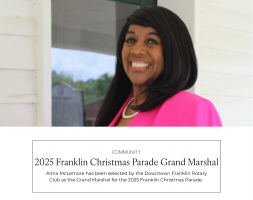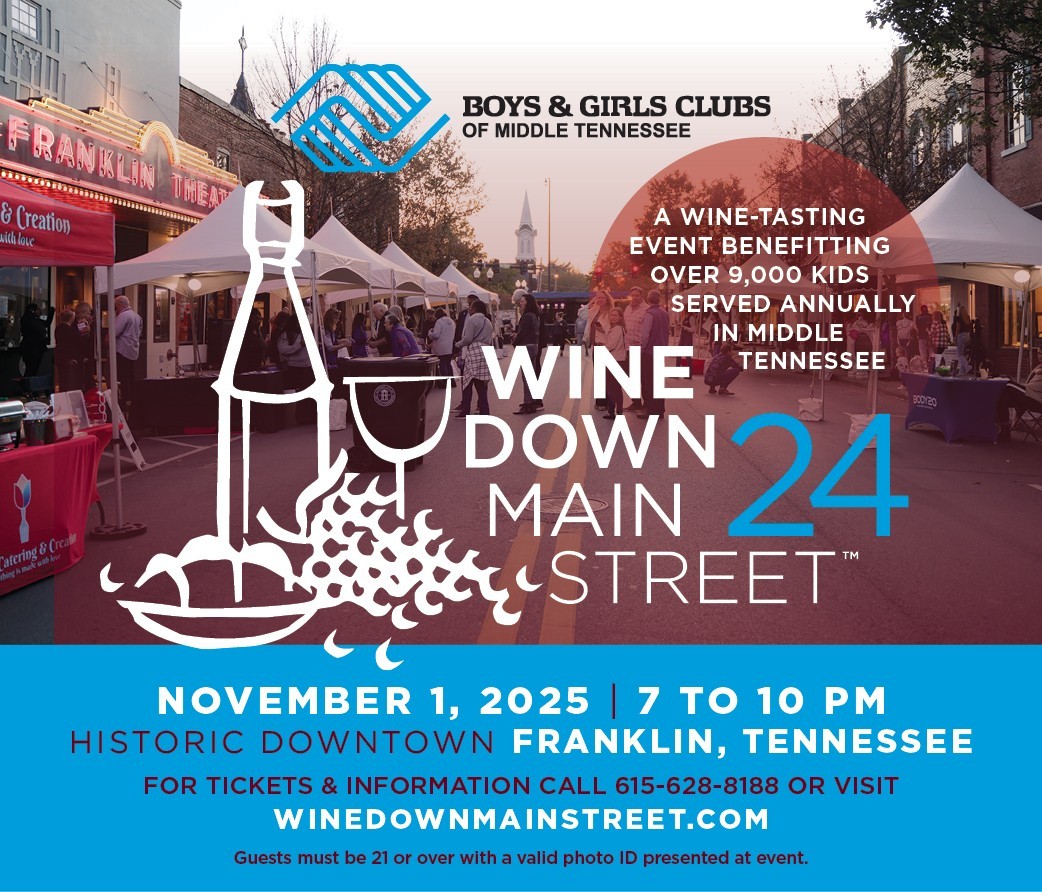Festive Lights & Not-so-Silent Nights
By Katie Shands
From bustling festivals and parades to shopping events and elaborate light displays, it’s impossible to overlook Christmas in Williamson County. However, in the earliest days of the county’s settlement, you’d be hard-pressed to find much Yuletide cheer. Christmas began as a European tradition and took some time to catch on in America. Some religious denominations, such as the Puritans and Presbyterians, even denounced the holiday as decadent and disgraceful.
One of the earliest mentions of Christmas in Williamson County appeared in the January 1839 edition of the Weekly Review: “Christmas has come again, the season of good feeling and glad cheer…” In the years that followed, Christmas only garnered a few passing notes in the papers. Printers routinely took the holiday week off and wished their readers a merry Christmas in the edition before their break. In December 1842, one Williamson County publisher left his readers with the admonishment to not “take too much eggnog” during the interim.
In 1846 and 1847, a Christmas parade–perhaps the first ever–was held in Franklin. The Dillahunty Division No. 4 Sons of Temperance marched in full regalia through the town’s streets to celebrate the holiday. The event concluded with several speeches and a candle lighting at a local church. Even so, Christmas wasn’t yet a big deal to Williamson Countians–hog killings got more ink than Kris Kringle in those days.
Christmas became less marginal in the 1850s, but its observance still looked quite different from our traditions today. The festivities in Williamson County tended to be raucous affairs, resembling modern New Year’s celebrations with a prolific use of fireworks, Roman candles, gunfire and squibs. As one can imagine, Christmas injuries weren’t uncommon. Newspapers reported shot-out eyes, lacerated hands, and even deaths. One county reporter described Christmas as “a day of festivity, of licentiousness and dissipation, of sport and drunkenness, of wild reveling and debauchery of immoralities the most revolting.” However, it should be added that not everyone partook in the mayhem. For example, those who subscribed to the Temperance movement observed Christmas in a much tamer way or, as one 1852 article put it when referring to the citizens of Spring Hill, “in a Christian-like manner.”
By 1860, Tennessee had legally recognized Christmas as a holiday. Over the next several years, holiday advertisements began to dot the pages of Williamson County’s newspapers. In December 1867, Owen & Ragsdale, a store located on Franklin’s Main Street, touted “an abundant supply of Christmas tricks, consisting of everything to suit the fancy of the young, the gay, and the old.” The shelves of Frank Eelbeck’s Drug Store were stocked with Christmas toys, candies and fireworks.
During the late 19th century, Christmas traditions made their way into Williamson County’s churches. In the 1870s, local congregations often hosted gift-giving parties for the children who attended their Sunday Schools. Special church services were also held, such as Christmas morning communions. In 1874, Christmas trees were displayed for public viewing in three of Franklin’s churches. The Presbyterians’ decorations proved to be of particular note with a tree “supported on either side by two lofty pyramids of fruit and two of candies, interlaced with endless snowy threads of popped corn.”
Despite the churches’ increasing observance of Christmas, many other celebrations in the county still remained quite rowdy. One reporter wrote about the county’s high number of holiday parties in 1874: “On Christmas morning, many were found skirmishing among the eggnogs. Novices fell early in the action, but veterans preserved an unbroken front until enfiladed with Col. Alston’s best Robertson County straight.” In 1886, Franklin’s mayor issued a Christmas-week proclamation disallowing firecrackers, rockets, and the such except between the hours of 6 p.m. to 6 a.m. “The boys do a great deal in smoke and noise at such times,” it was noted. However, this restriction didn’t quell the explosives as evidenced by a 1902 advertisement for Pointer & Company: “We have enough Roman candles, squibs, etc. to put out the eyes of all the boys in the county.”
The 20th century saw Williamson County’s celebrations take a more dignified turn. The newspapers’ social sections overflowed with elaborate descriptions of the Christmas luncheons and dinner parties thrown by elite members of the community. Decorations at these events were typically wreaths and swags made from cut holly and flowers. Potted poinsettias, small Christmas trees, and red or green candles were popular choices for the table centerpieces.
On Christmas Eve of 1920, a group of singers from various churches met at Franklin’s Interurban station. They marched through town, stopping to sing at any home with a lit candle in its window. In 1930, Brentwood’s Young Peoples’ Missionary Society sang carols at the windows of various houses in the community. According to a 1933 article, the Thompson Station School celebrated with “a tree laden with gifts all.” The teachers directed a play titled “Little Joe’s Christmas.”
As the years passed, the Christmas fireworks faded, and the electric lights increased. Many of the formal dinners morphed into potlucks. Artificial greenery replaced the fresh cuttings. Baked goods usurped the holiday fruits. And yet among the many changes, so much has stayed the same. Eggnog remains a popular holiday drink. Carols continue to be sung. Santa Claus still makes an appearance each December. Truly, today’s traditions are a blend of old and new, but the reason for the season endures: “For unto you is born this day in the city of David a Savior, who is Christ the Lord” (Luke 2:11). Wishing you and yours a merry Christmas!







.jpg)





.png)



















